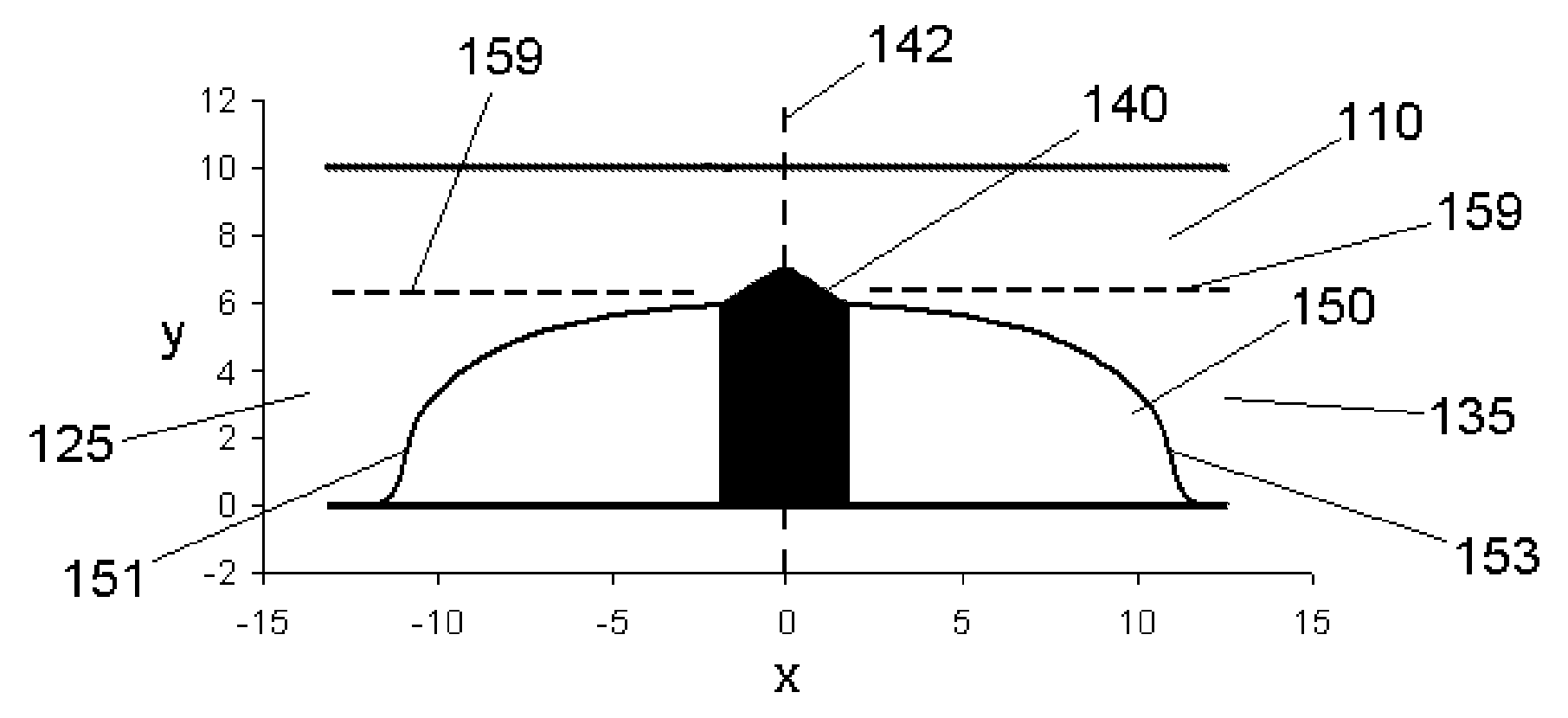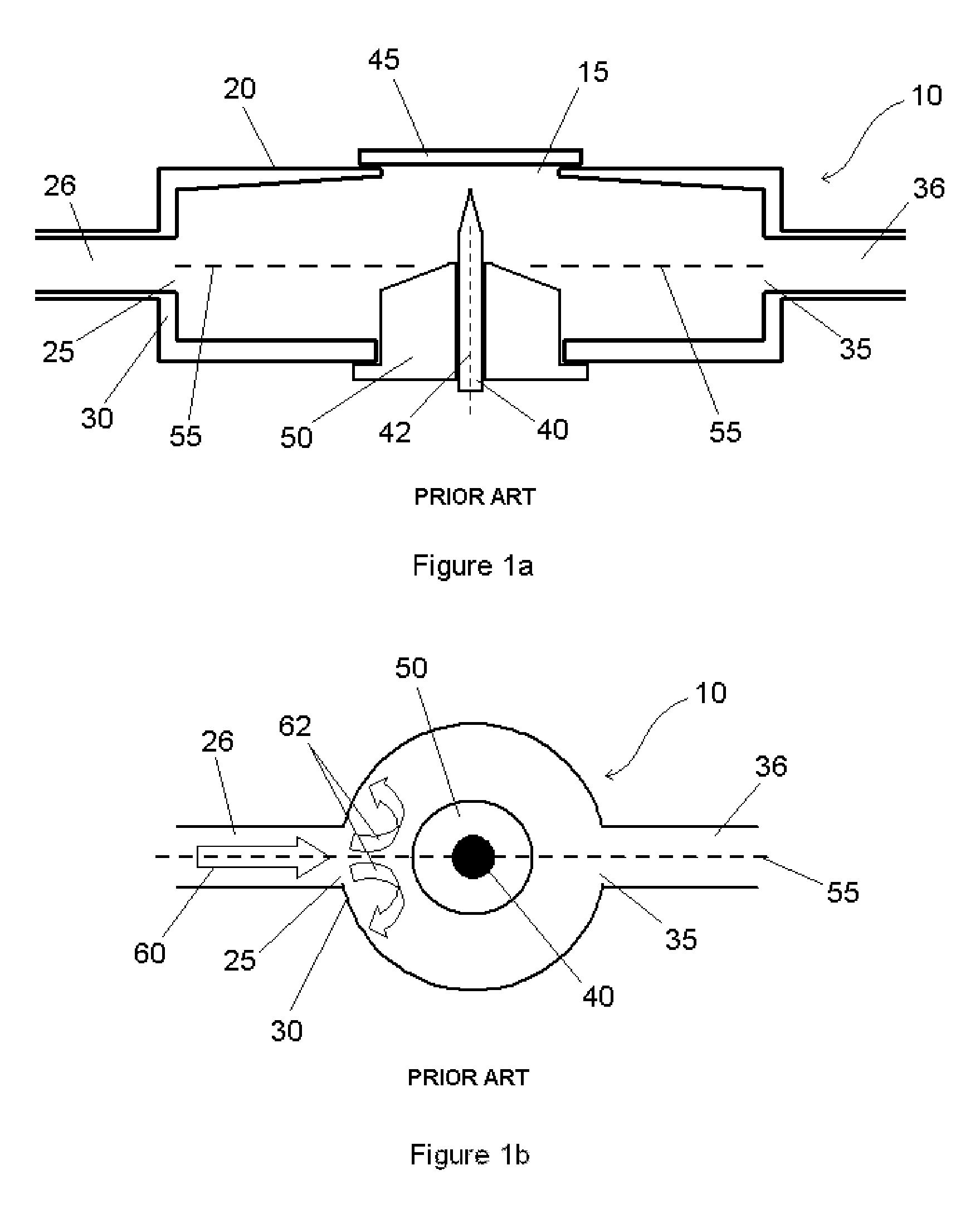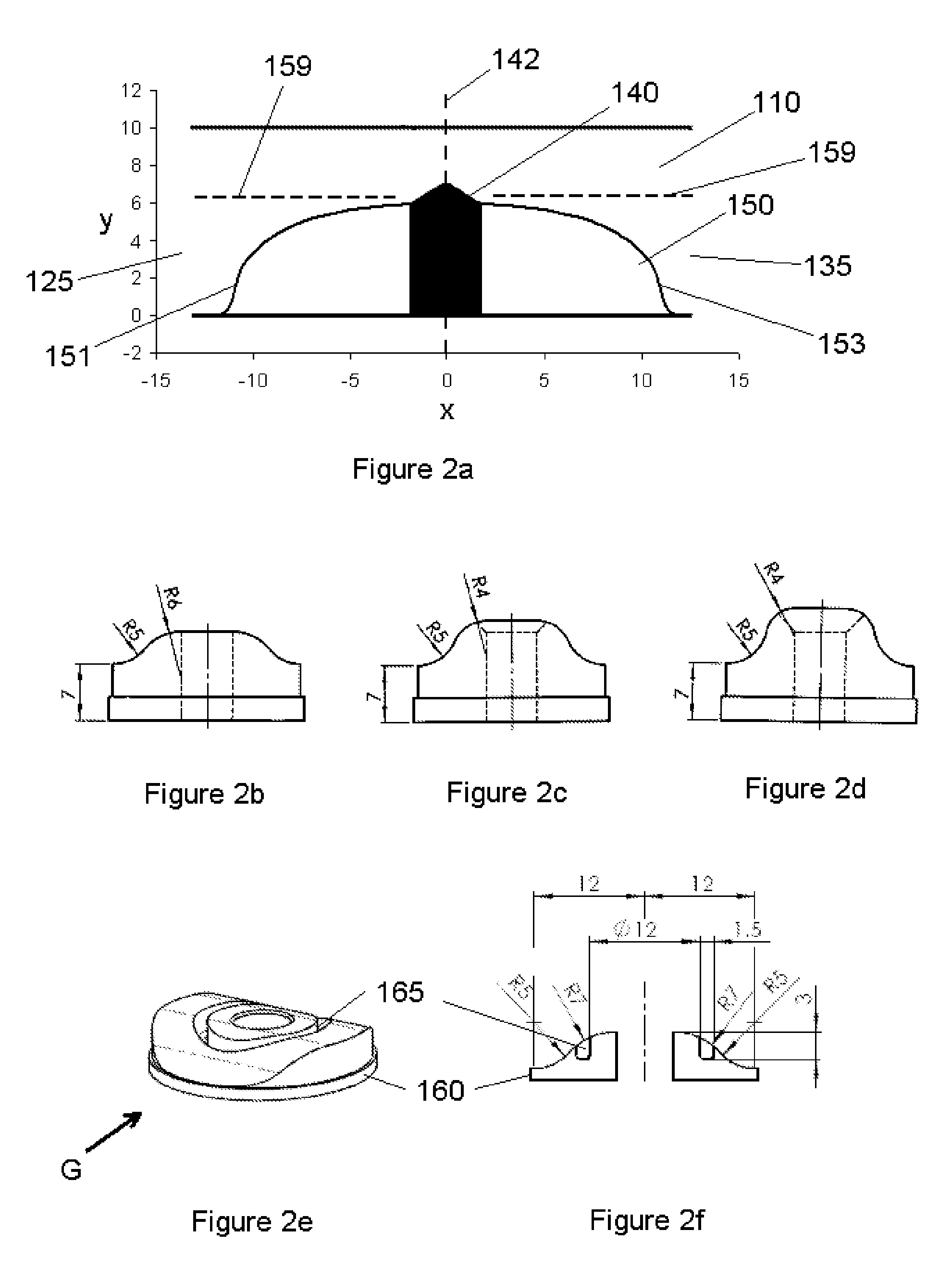Spark chamber for optical emission analysis
a spark chamber and optical emission technology, applied in the field of improved spark chambers for optical emission spectrometers, can solve the problems of inability to accurately measure, inability to accurately record nitrogen signals, and high cost of argon and other inert gases, and achieves rapid drop in flow velocity, increase in unobstructed cross sectional area, and high gas flow velocity
- Summary
- Abstract
- Description
- Claims
- Application Information
AI Technical Summary
Benefits of technology
Problems solved by technology
Method used
Image
Examples
Embodiment Construction
[0033]FIG. 1a shows a schematic cross-sectional side view of a prior art spark chamber of generally cylindrical geometry 10, comprising an aperture 15 in the top face 20 of the chamber 10. Gas inlet 25 adjoins the chamber on a curved sidewall 30 and gas outlet 35 adjoins the chamber on an opposing side. Gas inlet conduit 26 connects to gas inlet 25; gas outlet conduit 36 connects to gas outlet 35. Within the chamber is an elongated cylindrical electrode 40, the tapered conical end of which faces the centre of aperture 15. The cylindrical electrode 40 has an axis 42. In use, a sample 45 is mounted onto the chamber so that a face of the sample covers aperture 15. An electrical discharge is initiated between the electrode 40 and the sample to vaporise sample material, as previously described. Argon gas of purity better than 99.997% is fed into the chamber via the gas inlet 25 at a rate of 5 slpm (standard litres per minute) during sample analysis. The maximum unobstructed internal cros...
PUM
| Property | Measurement | Unit |
|---|---|---|
| wavelength range | aaaaa | aaaaa |
| gas flow rate | aaaaa | aaaaa |
| gas flow rate | aaaaa | aaaaa |
Abstract
Description
Claims
Application Information
 Login to View More
Login to View More - R&D
- Intellectual Property
- Life Sciences
- Materials
- Tech Scout
- Unparalleled Data Quality
- Higher Quality Content
- 60% Fewer Hallucinations
Browse by: Latest US Patents, China's latest patents, Technical Efficacy Thesaurus, Application Domain, Technology Topic, Popular Technical Reports.
© 2025 PatSnap. All rights reserved.Legal|Privacy policy|Modern Slavery Act Transparency Statement|Sitemap|About US| Contact US: help@patsnap.com



